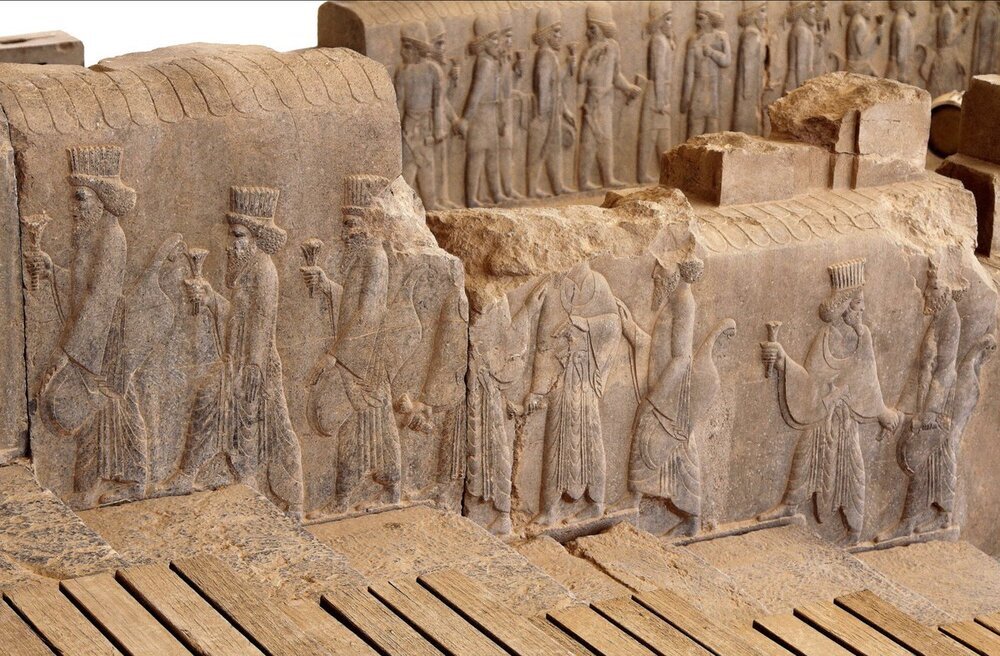Iran (IMNA) - The northern panel is divided into three tiers of well-preserved figures representing the Persian nobility, the Imperial Guard and the Immortals. On the upper tier, these figures are followed by the royal procession, valets and horses of the king’s chariot; on the lower two tiers these figures precede Persians wearing feather headdresses and Medes in their round caps.
The central panel of the staircase depicts a ring with wings (suggestive of the Zoroastrian symbol of the Fravahashi guardian spirit), flanked by two winged lions with human heads. Median and Persian (identified by their indented shields) soldiers stand guard.

The elaborate panels at the southern end of the staircase is a record of nations, showing 23 delegations bringing their gifts to the Achaemenid king. The Ethiopians begin the frieze in the bottom left corner and are joined by Arabs, Thracians, Kasmiris, Parthians and Cappadocians. The Elamites, Egyptians and Medians occupy the panel at top right. Accompanying this pantheon of guests are an assortment of delicately carved sheep with ram’s horns and curled wool, two-humped Bactrian camels, oxen and mules.
Today, the staircase is covered by a permanent shelter and the only direct sunlight is early in the morning.

Lonely planet


Your Comment